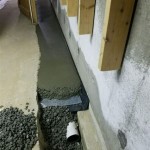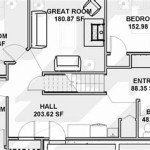Dehumidifier For Basement With Drain Hose And Pump
If you're looking for a way to reduce humidity in your basement, a dehumidifier is a great option. Dehumidifiers work by removing moisture from the air, which can help to prevent mold and mildew growth, improve air quality, and make your basement more comfortable. Many dehumidifiers come equipped with a drain hose and pump, which can make it easier to remove the collected water from the unit.
When choosing a dehumidifier for your basement, it's important to consider several factors, including the size of your basement, the level of humidity you want to achieve, and your budget. You should also make sure that the dehumidifier you choose has a drain hose and pump that are compatible with your basement's plumbing system.
Once you've chosen a dehumidifier, it's important to install it properly. The installation process will vary depending on the model of dehumidifier you choose, but most models can be installed in a few hours. Once your dehumidifier is installed, you can start using it to reduce the humidity in your basement.
Dehumidifiers with drain hoses and pumps are a great way to reduce humidity in your basement. They are easy to install and use, and they can help to improve the air quality in your home. If you're looking for a way to make your basement more comfortable, a dehumidifier with a drain hose and pump is a great option.
Benefits of Dehumidifiers With Drain Hoses And Pumps
There are many benefits to using a dehumidifier with a drain hose and pump, including:
- Convenience: Dehumidifiers with drain hoses and pumps are more convenient to use than models without these features. You don't have to worry about emptying the water tank, which can be a hassle.
- Efficiency: Dehumidifiers with drain hoses and pumps are more efficient than models without these features. They can remove more moisture from the air in a shorter amount of time.
- Peace of mind: Dehumidifiers with drain hoses and pumps give you peace of mind. You can be sure that your basement will be protected from mold and mildew growth.
How to Choose a Dehumidifier With a Drain Hose And Pump
When choosing a dehumidifier with a drain hose and pump, there are several factors to consider, including:
- The size of your basement: The size of your basement will determine the size of the dehumidifier you need. You'll need a larger dehumidifier for a larger basement.
- The level of humidity you want to achieve: The level of humidity you want to achieve will also determine the size of the dehumidifier you need. If you want to achieve a very low level of humidity, you'll need a larger dehumidifier.
- Your budget: Dehumidifiers with drain hoses and pumps vary in price. You'll need to find a dehumidifier that fits your budget.
How to Install a Dehumidifier With a Drain Hose And Pump
Installing a dehumidifier with a drain hose and pump is a relatively simple process. However, it's important to follow the manufacturer's instructions carefully. Here is a general overview of the installation process:
- Choose a location for your dehumidifier. The dehumidifier should be placed in a central location in your basement.
- Connect the drain hose to the dehumidifier. The drain hose should be connected to the dehumidifier's drain outlet.
- Connect the other end of the drain hose to a drain. The drain hose can be connected to a floor drain, a sink drain, or a sump pump.
- Plug in the dehumidifier. The dehumidifier should be plugged into a grounded electrical outlet.
Troubleshooting Dehumidifiers With Drain Hoses And Pumps
If you're having problems with your dehumidifier with a drain hose and pump, there are several things you can check:
- Make sure that the drain hose is connected properly. The drain hose should be connected to the dehumidifier's drain outlet and to a drain.
- Make sure that the drain hose is not kinked or blocked. The drain hose should be free of kinks or blockages.
- Make sure that the dehumidifier is plugged into a grounded electrical outlet. The dehumidifier should be plugged into a grounded electrical outlet.
If you've checked all of these things and you're still having problems with your dehumidifier, you should contact the manufacturer for assistance.

What Is The Best Basement Dehumidifier Reviews

50 Pt 3 500 Sq Ft Dehumidifier In White With Built Pump Drain Hose For Basement Garage Fan Speed Energy Star

Andte 190 Pints Commercial Dehumidifier With Pump For Basement Drain Hose

210 Pt 6500 Sq Ft Bucketless Commercial Dehumidifier In Gray With Drain Hose And Pump For Basement Cfzyoy210 The Home

Duracomfort Portable Dehumidifier For Basement 4500 Sq Ft With Drai

Andte 190 Pints Commercial Dehumidifier With Pump For Basement Drain Hose

145 Pints Commercial Dehumidifier With Pump And Drain Hose For Crawlsp

Ge 50 Pint Dehumidifier With Built In Pump For Basement Garage Or Wet Rooms Up To 4500 Sq Ft Grey Energy Star Aphl50lb The Home

Sanidry Xp Basement Dehumidifier Air Filtration System

Auseo 7000 Sq Ft 110 Pint Day Commercial Dehumidifier For Basement With Drain Hose And Pump
Related Posts







